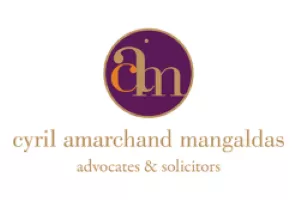Disputes involving whether capital gains taxes are leviable on sums/assets paid to retiring partners has been a subject matter of litigation for several decades now. In order to bring clarity, the legislature introduced a new provision (i.e. section 45(4)) into the Income tax Act, 1961 (IT Act), which provided that capital gains tax should be levied in the hands of the partnership firm at the time of distribution of assets. This seems, however, to have further complicated the situation.
Bangalore Income Tax Appellate Tribunal (ITAT) in the case of Savitri Kudur1 and the Madras High Court (HC) in the case of National Company2 have delivered noteworthy decisions recently. The Bangalore ITAT held that the cash consideration paid to the retiring partner on the basis of the amount lying in his/her capital account would not be subject to capital gains tax under the IT Act by relying on the decision of the Supreme Court (SC) in the case of Mohanbhai Pamabhai3. The Madras HC, on the other hand, held that even the allotment of immovable properties to the retiring partners would not be subject to capital gains tax by relying on the same SC decision in the case of the Mohanbhai Pamabhai (supra).
It is to be noted that while the Bangalore ITAT has distinguished its facts from the renowned Bombay HC decision in the case of A.N. Naik Associates4 but Madras HC has expressly disregarded it.
Facts
In the case of Savitri Kudur, the Assessee was a retiring partner in the firm which got reconstituted during the relevant year and as a consideration towards her retirement, the capital account of the partners were first revaluated and the amount standing to the credit of the same was given to her, along with certain excess consideration. The AO and CIT(A) had taxed the excess consideration as capital gains. Aggrieved, an appeal was preferred before the Bangalore ITAT.
In the case of the National Company, the Assessee was the partnership firm itself wherein the partners are family members and at the time of retirement of certain partners, they have obtained a portion of immovable properties of the firm. The AO and the ITAT have held that the properties obtained by the retiring partners would be subject to capital gains tax in the hands of the firm under section 45(4) of the IT Act. Aggrieved, an appeal was preferred before the Madras HC.
Issues
- In the case of Savitri Kudur, is capital gains tax leviable in the hands of the 'retiring partner' who has received cash consideration in excess of the amount lying in the capital account under section 45(1) of the IT Act?
- In the case of National Company, is capital gains tax leviable in the hands of the 'partnership firm' when it allots certain immovable assets in favour of the retiring partner at the time of retirement?
Analysis
Before dealing with the specificities of these decisions, it is worthwhile to refer to the broad background behind the disputes involving distributions made by the partnership firm. The erstwhile IT Act originally had a specific provision in the form of section 47(ii) stating inter alia that any distribution of capital assets on the dissolution of the partnership firm would not be regarded as a transfer of assets. Accordingly, distributions made by the firm were out of the ambit of capital gains tax.
The Supreme Court (SC) in the case of Sunil Sidharthbhai5 had held that capital gains tax cannot be levied in the hands of the partner who had converted his assets into the assets of the firm at the time of his admission into the partnership. The position of the SC and the aforesaid section 47(ii) of the IT Act enabled certain aggressive taxpayers to avoid capital gains tax in the pretext of dissolution of the firm.
The legislature decided to plug such loopholes and revised the IT Act in the following manner:
(a) Deleted the erstwhile section 47(ii), which provided that distribution of assets on the dissolution of a partnership firm would not be regarded as a transfer.
(b) Introduced section 45(3), which provides that any contribution made by the partner in the form of capital assets would be subject to capital gains tax and the amount credited to the capital account of that partner would be considered as consideration received by him/her.
(c) Also introduced section 45(4), which provides that any distribution of capital assets by way of dissolution of the firm or "otherwise" would be subject to capital gains tax and the fair market value on the date of such distribution would be construed as consideration received by the firm.
Subsequent to the amendment, disputes were revolving around whether section 45(4) would apply to a case when there is no dissolution but a reconstitution of the firm – i.e. consideration being paid to the retiring partner is taxable or not.
The Bombay HC in the case of A.N. Naik Associates (supra) held that the term "otherwise" forming part of section 45(4) would include within its sweep the 'reconstitution of the firm' and capital gains tax would therefore also be leviable in such cases. In this case, the taxpayer was a partnership firm constituted by family members and during reconstitution, various assets belonging to the firm were given to the retiring partners through a family arrangement. The HC held that the gains arising out of the said arrangement is taxable, which was subsequently upheld by various HCs, including the Madras HC6.
However, the same Madras HC seems to have rekindled the controversy by taking a different position in the instant case (i.e. National Company) wherein it was held that the immovable properties allotted to retiring partners would not be covered within the sweep of section 45(4) of the IT Act. It held that the consideration paid to the retiring partners are nothing but their share of interest in the firm. Therefore, there could not be any capital gains. The Madras HC took a view contrary to the decision of A.N.Naik Association (supra) by relying on another decision of the Bombay HC in the case of Prashant S. Joshi7and stated that the same HC had taken a different view. Apart from that, it had relied on a few decisions of the SC, which were decided on the basis of erstwhile provisions of the IT Act, i.e. before the amendment.
However, it is pertinent to note that the decision of Prashant S. Joshi did not overrule A.N.Naik Associates but only distinguished it on facts i.e. the firm did not distribute any assets to the retiring partners but only gave cash consideration. For this purpose, it relied on the SC decision in the case of Mohanbhai Pamabhai (supra), which held that when the amounts lying to the credit of a partner's capital account is given out to him at the time of his retirement, no capital gains tax shall be payable as the same only represents his share in the firm. Therefore, it is to be seen whether the decision rendered in the case of National Company would stand the test of time.
On the other hand, the Bangalore ITAT in the case of Savitri Kadur was considering whether the excess consideration given to the retiring partner, over and above what was lying in its capital account, was subject to capital gains tax or not. In view of the same, it considered the following issues:
- Taxability when the retiring partner was paid the amount lying to his credit in the capital account.
- Taxability when the retiring partner was paid over and above the amount lying in his/her capital account.
- Taxability when the retiring partner is paid a lump sum consideration with no reference to the amount lying in the capital account
In respect of the situation laid out in (a), the Bangalore ITAT held that the position taken by the SC in the case of Mohanbhai Pamabhai (supra) still holds good by holding that the said section intends to levy capital gains tax in the hands of the partnership firm on distribution of 'capital assets' and the SC had held that the amounts lying in the own capital accounts of partners represents their interest and the payment of the same, upon retirement, does not attract capital gains tax. In view of the same, it had held that section 45(4) cannot be said to have nullified that position held by SC.
In respect of situation (b) and (c), the Bangalore ITAT held that when a partner was paid over and above the amount lying to the credit in his capital account or when a lump sum consideration was paid, it cannot be stated that the partner received only what he was entitled to. The excess consideration payable over and above the amount lying in the capital account could be regarded as having been paid for releasing his interest in the partnership firm, which also could be construed as a transfer of his rights in the firm, and shall have to be subject to capital gains tax in his hands. Similarly, when a lump sum consideration is being paid to the retiring partner without having regard to the capital account, it would also be construed as a consideration received for the transfer of rights in the firm towards the continuing partners and the difference between such lumpsum consideration and the amount standing to the credit of the concerned retiring partner shall be subject to tax.
Significant Takeaways
The decision of the Madras HC had rekindled the earlier controversy of whether the assets distributed to retiring partners is taxable or not. However, it needs to be seen whether the ratio of this decision would stand the test of time in view of the fact that the precedents it had relied on does not per se help its conclusion.
On the other hand, the Bangalore ITAT can be said to have provided a much needed clarity in respect of the issues concerning the circumstances in which a cash consideration received by the retiree would be taxable insofar as reiterating the position that amount paid to the retiring partner based on the amount lying to the credit of his/her capital account, post revaluation of assets and liabilities of the firm would not be taxable as it only represent his interest in the firm.
It is common practice for corporate entities to set up a special purpose vehicle (SPV) to make investments into operating companies and, in certain cases, the SPV is preferred to be a partnership firm or a Limited Liability Partnership (LLP) because in addition to operational flexibility and a lesser compliance burden, the partnership firm / LLP could also be able to freely distribute the profits to the partner entities without payment of a dividend distribution tax and such profits would be exempt from tax in the hands of partner entities as well.
Most importantly, it is necessary to refer to the terms of the partnership deed to determine if it constitutes release of any assets/rights in favour of the continuing partners. If the manner in which retirement is effected indicates that the retiring partner assigns/releases/relinquishes any of the rights that it had held in the firm in favour of the continuing partners, then capital gains tax could be levied on the retiring partner under section 45(1) of the IT Act.
Footnote
1 Savitri Kudur v. DCIT (ITA No. 1700/Bangalore/2016 dated May 03, 2019)
2 National Company v. ACIT (TCA. No. 365 & 366 of 2009 dated April 08, 2019)
3 ACIT v. Mohanbhai & Pamabhai 165 ITR 166
4 CIT v. AN Naik Associates (2004) 136 Taxman 107 (Bombay)
5 Sunil Sidharthbhai v. CIT (1985) 156 ITR 509
6 CIT v. Nathan and Co. (TCA No. 1458 of 2005)
7 Prashant S Joshi v. ITO (2010) 324 ITR (Bom)
The content of this article is intended to provide a general guide to the subject matter. Specialist advice should be sought about your specific circumstances.



